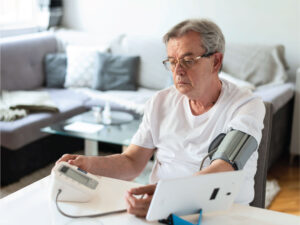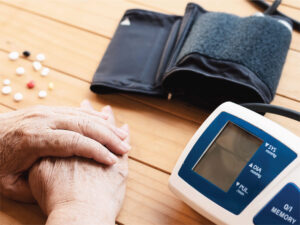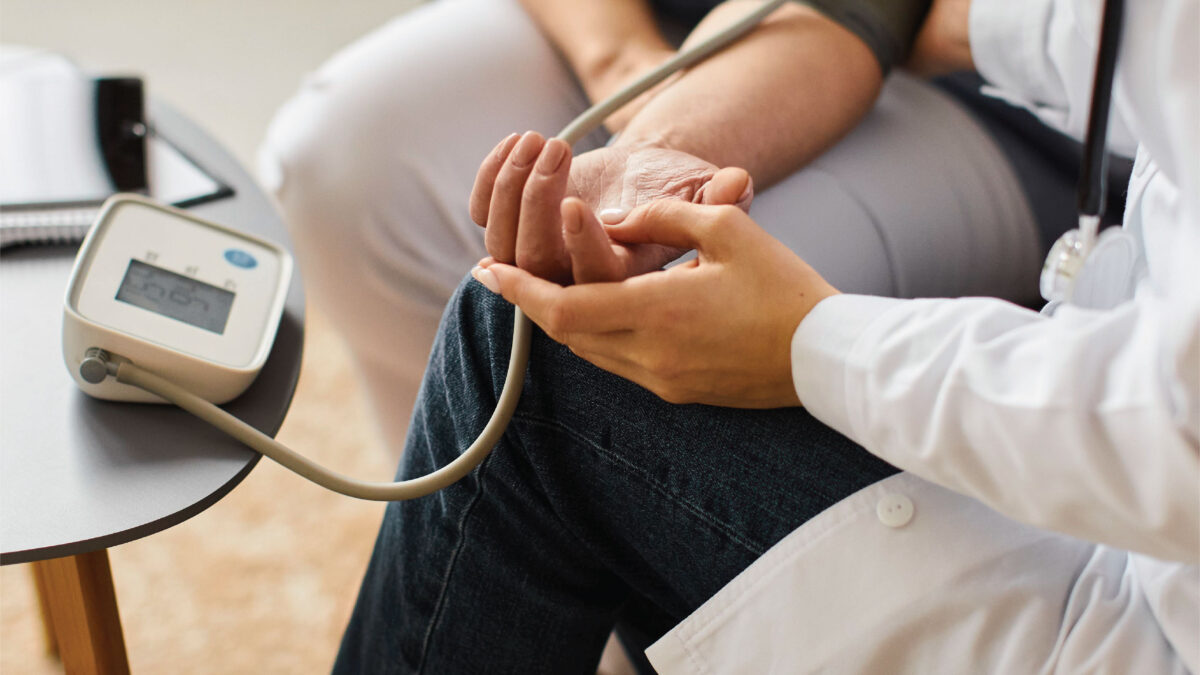
Is A Carb Restrictive Diet Safe For Diabetes Patients?
July 11, 2022
The Link Between Artificial Sweeteners & Diabetes: Are They Really Safe?
July 11, 2022People with diabetes are often at a higher risk of getting high blood pressure levels. Therefore, it is extremely important to monitor your blood pressure regularly and maintain it in a healthy range.
As a part of your diabetes management, you must get your blood pressure levels checked by your healthcare team at regular intervals anyway. However, it is recommended to also self-monitor your blood pressure levels at home for effective diabetes management.
A Glimpse in the Relationship Between Diabetes and Blood Pressure
High blood sugar levels in diabetes can cause atherosclerosis, a condition in which fatty material builds up inside your blood vessels and narrows them. It eventually increases the pressure inside the blood vessels and makes it difficult for them to push blood around important body parts and organs. Therefore, people with diabetes are usually at higher risk of getting high blood pressure levels.
High blood pressure levels can also increase the risk of several diabetes complications like cardiovascular diseases, eye problems, kidney disorders, heart failure, etc. Therefore, it is crucial to monitor blood pressure levels regularly at home.
Benefits of Self-Monitoring Blood Pressure Levels

- Your fixed checkups can delay the diagnosis of high blood pressure levels or hypertension. However, if you monitor your blood pressure at home regularly, your doctor is more likely to diagnose hypertension at an early stage and prevent many diabetes complications.
- Home monitoring of blood pressure levels can also provide the patient and the doctor with valuable information regarding the ongoing management of diabetes and hypertension. It plays an active role in improving your diabetes medication.
- Self-monitoring blood pressure level motivates you to follow a healthy lifestyle and keep your blood pressure in a healthy range.
Recommended Blood Pressure Range for People With Diabetes
If you have diabetes, you should aim to keep your blood pressure levels below 140/80 mmHg. However, if you also have kidney diseases, eye disorders or any other complication that may affect blood vessels and blood supply to the brain, then your blood pressure levels should be below 130/80 mmHg.
Nevertheless, you must consult your healthcare team to discuss your individual target.
How To Self Monitor Your Blood Pressure?

Buy a blood pressure monitor from a chemist or a pharmacy to use at home. It will have a cuff or a band that you have to put around your arm. Then, you have to inflate that cuff as per the direction of the machine, so it starts squeezing your arm. Your blood pressure level is automatically calculated by measuring the changes in the motion of your artery as the blood flows through while the cuff deflates.
You will get your results on the machine right away. Make sure you note down all the readings and provide them to your healthcare team at the next appointment.
Tips For Measuring Blood Pressure Levels Accurately
- Have your doctor check your device’s accuracy before you use it for the first time. Also, learn from your doctor how to use it properly.
- Measure your blood pressure levels twice every day, once before eating or taking any medication and the second in the evening. Every time take two or three readings to ensure that the results are accurate.
- Do not measure your blood pressure just after you wake up. Take some time and prepare for your day. But make sure to take it before you exercise, eat breakfast or take any medication.
- Avoid eating any food, caffeine or alcohol for at least 30 minutes before measuring your blood pressure levels. Also, go to the toilet before taking your measurement, as a full bladder can increase your blood pressure levels.
- Sit for five minutes in a comfortable position before you take the measurement. Be calm and do not think about stressful things as it may increase your blood pressure levels.
- Always make sure that your arm is positioned properly while taking blood pressure. Raise your arm at the level of your heart and rest it on a pillow, cushion or table before you put the cuff.
- Do not place the cuff over clothing. Roll up your sleeve and put the cuff on bare skin to get accurate readings.
The Final Takeaway
If you have diabetes, you are at high risk of getting high blood pressure levels. Therefore, you must monitor your blood pressure levels regularly. However, going to the doctor every day is not possible. Hence, you must start self-monitoring your blood pressure levels.
Self-monitoring blood pressure will help prevent not only hypertension but also several diabetes complications that arise due to high blood pressure levels.
References:
- https://www.mayoclinic.org/diseases-conditions/high-blood-pressure/in-depth/high-blood-pressure/art-20047889
- https://www.hopkinsmedicine.org/health/conditions-and-diseases/diabetes/diabetes-and-high-blood-pressure
- https://www.ahajournals.org/doi/10.1161/hypertensionaha.111.188409
- https://www.aafp.org/pubs/afp/issues/2007/0715/p255.html
- https://diabetesjournals.org/clinical/article/22/1/28/1408/Home-Blood-Pressure-Monitoring-and-Diabetes
- https://www.diabetes.org.uk/guide-to-diabetes/managing-your-diabetes/blood-pressure
- https://www.medicalnewstoday.com/articles/317220




